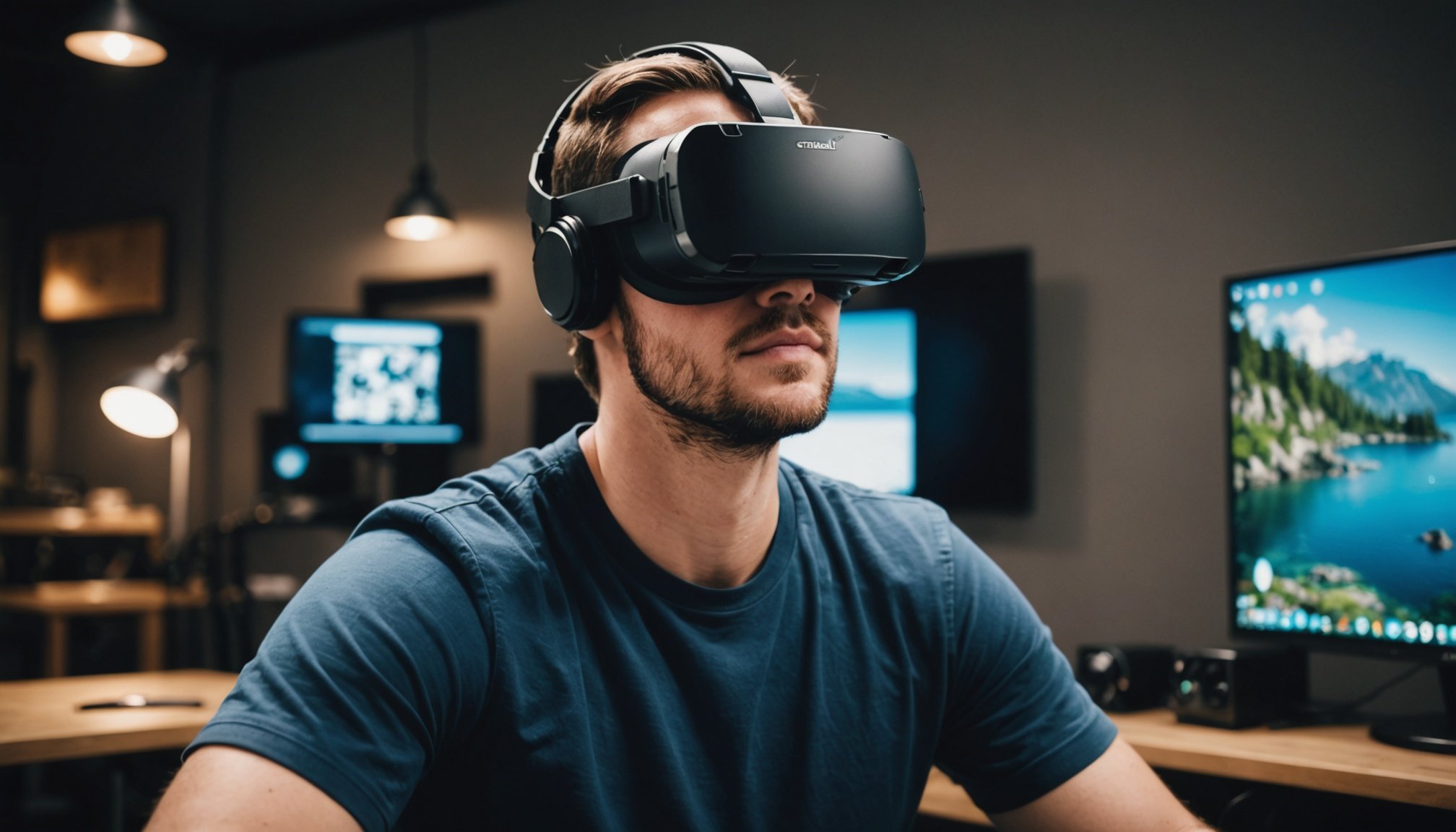Overview of Virtual Reality in Therapeutic Gaming
In recent years, Virtual Reality (VR) has been transforming therapeutic practices, particularly in the field of mental health. VR creates immersive environments that provide users with a sense of presence, offering unique possibilities for therapeutic gaming. These environments can simulate real-life scenarios in a controlled and safe manner, allowing patients to experience situations they may find challenging.
Therapeutic gaming through VR applications is being explored as an innovative method to support mental health initiatives. These applications often incorporate elements of gaming to engage users and promote therapeutic outcomes. For instance, virtual reality can be used to treat anxiety disorders by exposing patients to their stressors within a manageable context. Similarly, VR has shown promise in assisting those with post-traumatic stress disorder by allowing them to revisit traumatic scenarios in a supportive way.
Also to read : Mastering Realistic Cloudscapes: Your Comprehensive Handbook for Outstanding Flight Simulations
The potential for VR to enhance psychological treatment outcomes is substantial. By providing an environment that is both interactive and adaptable, VR can cater to individual therapeutic needs and preferences. This personalization enables more effective interventions, leading to improved mental health management. Furthermore, ongoing advancements in VR technology continue to enrich these therapeutic possibilities, making VR an exciting frontier in mental health care.
Identifying Safety Risks in VR Therapeutic Gaming
Virtual Reality (VR) gaming offers promising therapeutic potential, yet it also poses certain safety risks that must be considered. Addressing both physical and psychological aspects is crucial to ensure client well-being in overcoming mental health issues.
Also to see : Unlocking Intelligent Enemy Behavior in Platformers: A Comprehensive Guide to Neural Network Strategies for Game Developers
Among the physical risks, prolonged use of VR equipment can lead to eye strain and dizziness. Users may also experience loss of balance or spatial disorientation, increasing the likelihood of accidents. It’s important that equipment fits correctly to prevent discomfort and potential harm.
Psychologically, virtual environments might trigger underlying anxieties or even exacerbate existing mental health conditions. For example, clients with severe instances of anxiety might struggle with intense immersion, causing distress. An awareness of these concerns helps practitioners mitigate adverse experiences.
An essential part of assessing individual suitability involves evaluating a participant’s mental health history and physical condition. This information can guide practitioners in crafting personalized VR interventions. Ensuring an understanding of the potential VR gaming risks helps create a supportive environment tailored to therapeutic needs.
Vigilant monitoring and clear communication allow for the timely adjustment of therapeutic approaches, thereby reducing safety risks. These measures help ensure that the therapeutic gaming experience remains beneficial and safe for everyone involved.
Guidelines for Safe VR Usage in Therapeutic Settings
Ensuring safety and effectiveness in virtual reality (VR) settings for therapeutic purposes is pivotal. Creating a conducive environment is the first step. This includes setting up equipment in a spacious room to prevent accidents and ensuring VR headsets and controllers fit securely. Regularly checking and maintaining the equipment helps to prevent technical issues that might disrupt therapy.
Personalisation is crucial when tailoring VR experiences for individuals. Practitioners should consider clients’ specific therapeutic goals and modify virtual scenarios to fit these needs. For example, intensity levels can be adjusted to help a client gradually face their fears in a controlled manner, fostering a sense of empowerment.
Consistent monitoring of clients’ experiences is vital. Practitioners should remain vigilant and gather constant feedback through verbal check-ins or questionnaires. This not only helps in identifying any discomfort or distress early but also allows for timely adjustments to the therapy.
Incorporating these safety guidelines within VR protocols ensures a supportive and effective therapeutic journey. Providing a safe framework empowers clients to engage fully with the therapy, optimising mental health outcomes in an innovative way.
Ethical Considerations in VR Therapeutic Gaming
In the realm of therapeutic gaming, ensuring ethical integrity is crucial. Informed consent is a foundational principle when employing Virtual Reality (VR) with patients. Clinicians must clearly communicate the potential benefits, risks, and nature of VR experiences to ensure participants fully understand what they are consenting to. This transparency is vital for maintaining trust between practitioner and patient.
Moreover, privacy concerns surrounding VR data collection need careful attention. VR applications often record sensitive data, such as biometric feedback, which must be safeguarded. Establishing strict protocols for data handling and storage is essential in protecting patient confidentiality and upholding ethical standards.
Immersive VR experiences also pose unique ethical dilemmas. They can blur the lines between reality and virtuality, potentially impacting individuals’ perceptions and emotions. Ethical practice demands that therapists remain vigilant about the psychological effects of these experiences, adjusting interventions as necessary to prevent harm.
In navigating these ethical concerns, practitioners should adhere to established guidelines and continuously update their practices in response to technological advancements and emerging ethical insights. By prioritizing informed consent, data privacy, and the ethical management of immersive experiences, VR therapeutic gaming can be conducted responsibly, fostering positive outcomes for mental health care.
Best Practices for Practitioners in VR Therapy
Therapists exploring Virtual Reality (VR) therapy should follow structured best practices to ensure effective and safe implementation in clinical settings. Adequate training and qualifications are critical, as VR presents unique challenges distinct from traditional therapeutic methods. Practitioners should seek certifications that encompass the technical, ethical, and clinical aspects of VR applications.
Integration techniques play a significant role in smoothly embedding VR into existing therapeutic frameworks. By blending traditional therapy with immersive VR experiences, therapists can create more engaging and dynamic treatment plans. This might involve gradually introducing VR elements to patients, thus maintaining a balance between established methods and innovative practices.
Real-world case studies illustrate the success and potential of VR interventions in mental health therapy. For instance, incorporating VR scenarios has shown promising outcomes in reducing phobia symptoms. These case studies serve as valuable examples and emphasize the importance of designing VR experiences tailored to individual therapeutic goals.
By adhering to these best practices, practitioners not only enhance the effectiveness of VR therapy but also build trust with their clients. This structured approach ensures VR therapy is both beneficial and aligned with clinical guidelines, leading to improved mental health outcomes.
Insights from Research and Expert Opinions
Recent research insights highlight the transformative role of VR effects in mental health therapy. Studies emphasize VR’s ability to create safe, controlled environments, allowing patients to practice coping skills for various mental health issues. This immersive approach has been shown to significantly reduce symptoms in conditions like PTSD and anxiety disorders, demonstrating VR’s therapeutic potential.
Expert opinions frequently underline the importance of integrating VR with traditional therapeutic methods for enhanced effectiveness. Specialists advocate for VR as a complementary tool rather than a standalone solution, promoting a hybrid approach that respects established treatment protocols while embracing innovation. Through this lens, VR enhances patient engagement and accelerates treatment progress.
Looking ahead, the field is poised for exciting future directions. Researchers are exploring the long-term effects of regular VR use in therapy and its potential to address a broader range of psychological conditions. Experts encourage collaboration between technologists and mental health professionals to refine VR applications, ensuring they remain safe and effective. The continued evolution of VR technology promises to unlock new possibilities, making it an indispensable feature of mental health care in the future.
Conclusion and Recommendations
With Virtual Reality (VR) firmly establishing its potential in mental health therapy, assessing and mitigating associated risks is key. Emphasizing robust safety measures ensures that therapeutic gaming experiences remain secure and effective. It’s vital to maintain constant vigilance over both physical and psychological risks, fostering patient comfort and safety throughout sessions.
For future advancement, continued research is essential. Delving deeper into long-term effects of VR use will support the development of safer, more adaptive therapeutic tools. Practitioners must remain informed about emerging findings and integrate them into clinical best practices, continuously enhancing the quality of care provided.
Community feedback plays a crucial role in refining VR therapy applications. Encouraging input from patients can identify areas for improvement, ensuring technology aligns with individual needs and therapeutic goals. This collaborative approach not only optimizes treatment outcomes but also enriches the therapeutic journey.
Ensuring privacy and adhering to ethical standards further strengthens public trust in VR therapy. By prioritizing informed consent and safeguarding data, clinicians can maintain transparency and build a foundation of mutual respect. Overall, strategic implementation, ongoing research, and community involvement will secure VR’s place as a transformative tool in mental health care.




